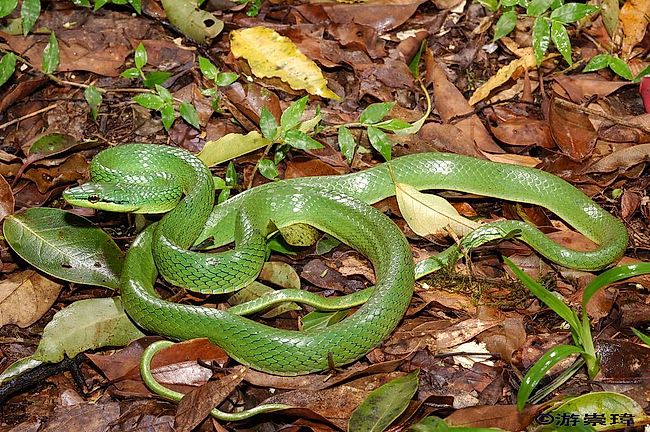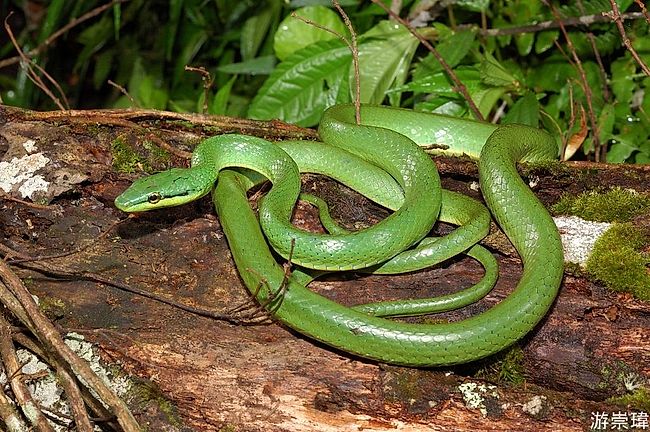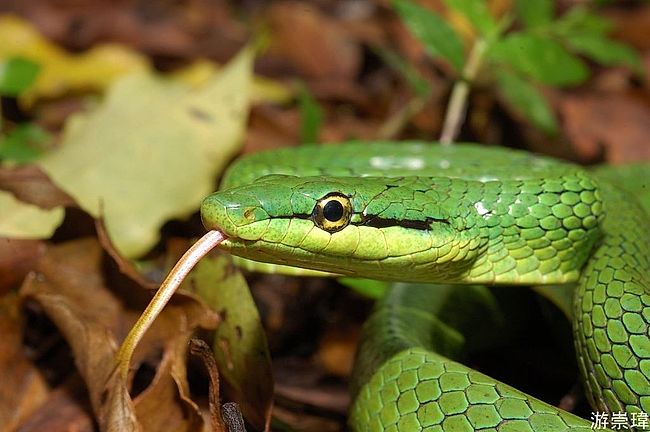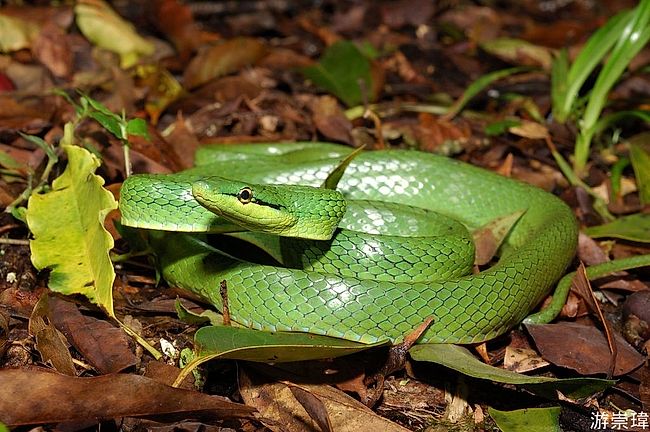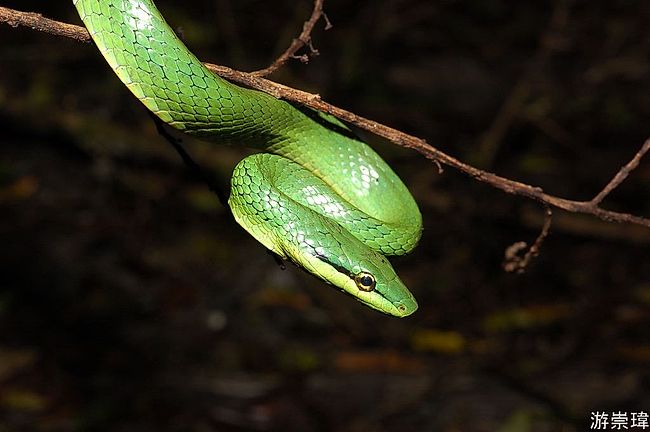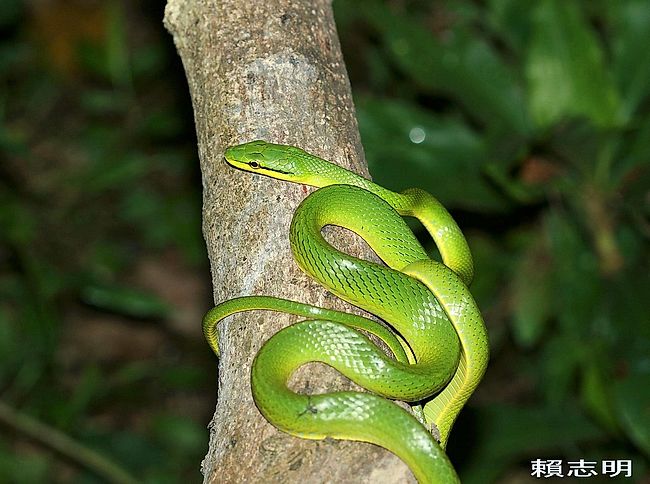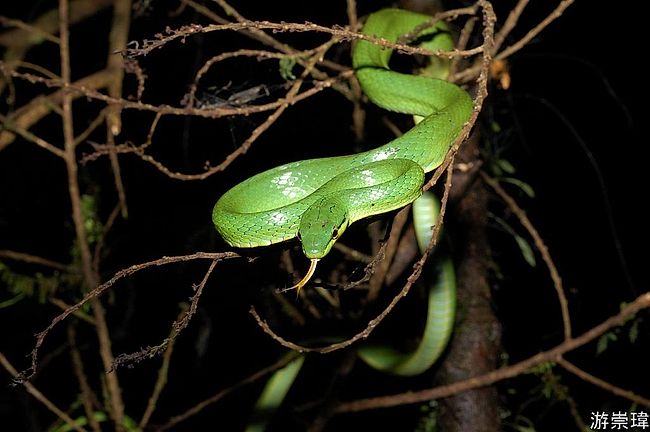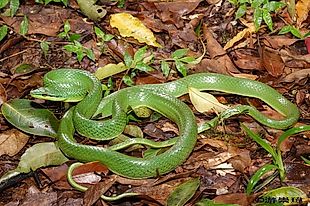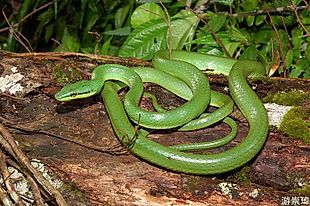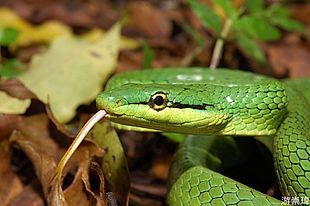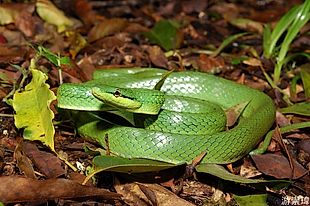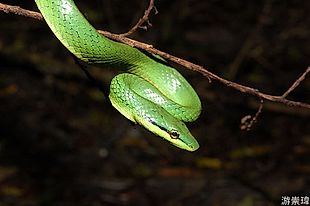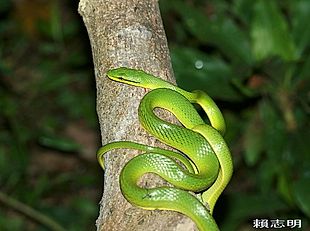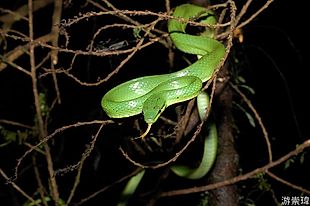Gonyosoma frenatum
Rein Snake
灰 腹綠錦蛇 (hui1fu2lü4jin3she2)
Status: Not Protected
Non-venomous
Videos
More Photos
- Wild specimen
- Captive specimens
- Caresheet on Ratsnake Foundation
Family
Colubridae, subfamily Colubrinae
Max. length
150 cm
Occurrence in Taiwan
This species was first discovered in Taiwan in 1996, in Pingdong (屏東) County. Since then, more records have come from other locales in southern and south-eastern Taiwan, up to 1200 meters altitude. Very rare.
Global Distribution
India (Assam, Arunachal Pradesh), South China (SW Sichuan, Fujian, Guangdong, Guangxi, Anhui, Guizhou, Zhejiang, Henan, Hunan), Taiwan, N. Vietnam.
Description
Medium-sized snake; total length up to 150 cm. There are 13-21 (17-19 at mid-body) rows of scales, which are smooth or feebly keeled except those on the flanks. Head is long and slightly triangular, with pointed snout; body is slender and laterally compressed; tail is very long and prehensile. Eye is medium to large; iris is cream to yellow with black pigment anteriorly and posteriorly, and pupil is round, black, with less distinct, narrow ring of light yellow. Tongue is cream to dull red flanked by diffuse white pigment. There are no loreals. Upper head, body and tail are uniform green to dark green. There is usually a black stripe from the nose bypassing the eye to the jaw base; the supralabials are light yellow. Ventral surface is pale green to white, usually more yellow in head and neck; the sides of ventral scales on body and tail are keeled. Anal scale is divided and the subcaudal scales are paired. Coloration of the young does not resemble that of the adult. Upper surface is gray to brown, with light-bordered black stripes on upper head and nape, and may be with oblique, irregular, black crossbars on upper body. Ventral surface of head and the supralabials are whitish but marked with black spots. The majority of ventrals bear two dark lateral spots.
Biology & Ecology
This diurnal, arboreal snake inhabits shrubs, low trees or bamboo forests. It preys on frogs, lizards, birds, and mice. Females produce about 5 eggs of approximately 4.5 x1.7 cm per clutch in summer.
This snake has a very interesting way of crossing roads:
Step 1: move forward a little
Step 2: stiffen its body
Step 3: sway to the left and right, mimicking a twig being moved by the wind.
After a while, it will resume movement with Step 1. However, if it is disturbed, it will flee as quickly as it can.
Etymology
Gonyosoma comes from Wagler, who, like Stejneger, were rare 19th century authors who provided greek etymologies. In the present case - gony (angle), soma (body), probably in reference to the sharply angled ventrolateral junction that is characteristic of so many "rat" snakes.
frenatum is Latin for "bridled".
The Chinese name 灰腹綠錦蛇 (hui1fu2lü4jin3she2) means "Grey-bellied Green Ratsnake", (灰腹 = grey bellly, 綠 = green, 錦蛇 = ratsnake/racer)







